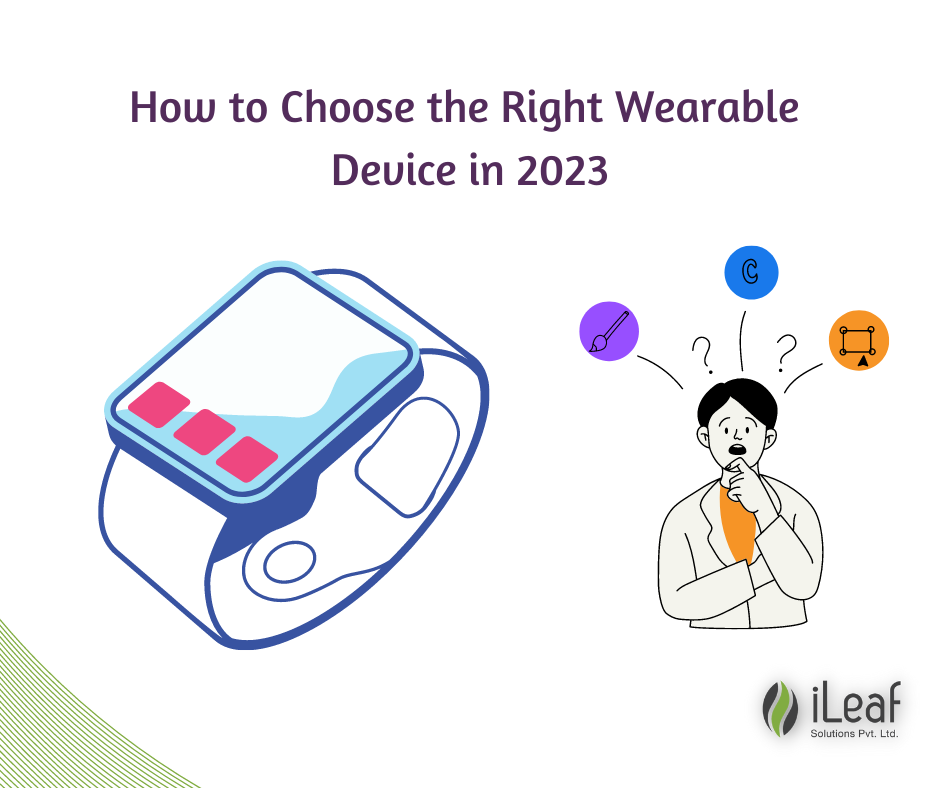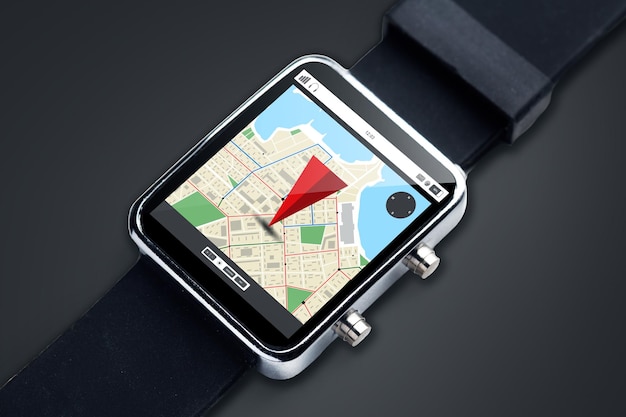How to Choose the Right Wearable Device: A Comprehensive Guide

Overview
- Introduction
- What are Wearable Devices?
- Wearable Technology and Software Development
- IoT & Wearable Technologies.
- Wearable devices Impacting Healthcare
- Conclusion
Introduction
Wearable devices have come a long way in the past few years, from being limited to fitness trackers to now encompassing a wide range of devices such as smartwatches, augmented reality glasses, smart clothing, and more. With this explosion of wearable technology, it can be overwhelming to choose the right device for your needs. In this blog, we'll explore what wearable devices are, the different types of wearable technologies, and what to consider when choosing the right wearable device.
What are Wearable Devices?
Wearable devices are electronic devices that are designed to be worn on the body or clothing, typically used for tracking fitness goals or as a means of communication. They come in various forms, such as watches, glasses, headbands, necklaces, and even smart clothing. Wearable devices are connected to smartphones or other devices through Bluetooth or Wi-Fi to allow users to access various apps, notifications, and features.
Wearable Technology and Software Development
Wearable technology is not just about hardware, but also software development. Wearable devices rely heavily on software, and advancements in software development have led to the creation of more advanced and sophisticated wearable devices. The software development process for wearable devices is quite different from that of traditional desktop or mobile applications. Developers have to consider factors like device compatibility, battery life, and user experience when building wearable applications.
IoT & Wearable Technologies.
Wearable devices are a significant part of the Internet of Things (IoT) ecosystem. IoT refers to the interconnected network of devices, including wearables, that are connected to the internet and can communicate with each other. Wearable devices play an essential role in IoT, as they provide real-time data that can be used for a wide range of applications, from healthcare to smart homes.
Glasses
Smart glasses, also known as augmented reality glasses, are a wearable technology that allows users to view digital information overlaid onto the real world. They are used in various fields, including gaming, education, and healthcare. When choosing smart glasses, it's essential to consider factors such as battery life, display resolution, and compatibility with your smartphone or other devices.
Location Devices
Location devices are wearable devices that help users keep track of their location, such as GPS trackers. They are commonly used in sports, outdoor activities, and for tracking children or pets. When choosing a location device, it's essential to consider the accuracy of the device, battery life, and the level of connectivity it offers.
Clothing
Smart clothing is an innovative type of wearable technology that uses sensors embedded in clothing to monitor various aspects of a user's health and fitness, such as heart rate, breathing rate, and temperature. When choosing smart clothing, it's essential to consider the fit, comfort, and washability of the clothing.
Wearable devices Impacting Healthcare
Wearable devices have had a significant impact on healthcare, allowing for the remote monitoring of patient's health and wellness. They are used in various applications, from monitoring vital signs to tracking medication adherence. When choosing a wearable device for healthcare applications, it's important to consider the accuracy of the device, its ability to integrate with electronic health records (EHR), and data security.
Increased Focus on Data Security
As wearable devices collect more personal data, there is an increased focus on data security. Wearable devices are vulnerable to cyber threats, and users need to ensure that their devices are secure. When choosing a wearable device, it's essential to consider the device's security features, such as encryption and two-factor authentication.
Are Wearable Devices Here to Stay?
Wearable devices have become an essential part of our lives, and their popularity is only set to grow. As technology advances, we can expect to see more advanced and sophisticated wearable devices that offer even more features and capabilities.
Conclusion
Choosing the right wearable device depends on your specific needs and preferences. Consider factors such as device compatibility, battery life, display resolution, accuracy, and data security when choosing a wearable device. With the right wearable device, you can enhance your lifestyle, improve your health, and stay connected with the world around you. As wearable technology continues to evolve, we can look forward to more innovative and exciting wearable devices that will further transform our lives.














